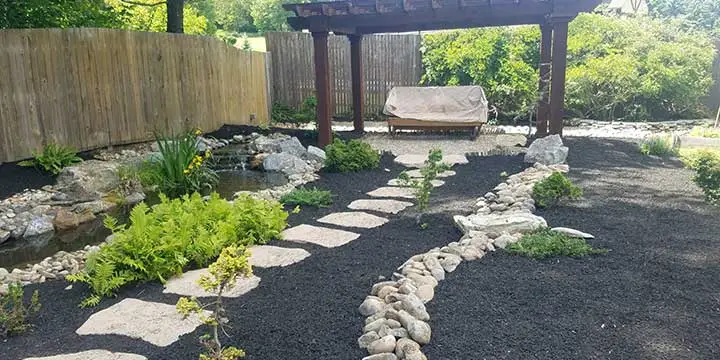How to Deal With the Soil Cores on Your Lawn After It Was Aerated
Core aeration is an essential lawn care service that property owners in Pennsylvania can take advantage of to improve the health of their grass. However, as a result of the core aeration process, lawns that have been aerated will have a bunch of soil cores laying on top of them. If you've had your lawn aerated and are wondering how to deal with these soil cores, you have a few options. The first thing you can do is to leave them alone to decompose as they will return nutrients to your lawn as they do so. You can also rake or mow over them to speed up the decomposition process. If you can't stand how the soil cores are making your lawn look, your last option is to remove them altogether. However, this method is not recommended because your lawn will miss out on the nutrients the soil cores will eventually release.
Leave the cores of soil on your lawn to decompose.

After your lawn has been aerated, you'll be left to deal with numerous cores of soil on your lawn. The best thing to do with these soil cores is to leave them on your lawn to decompose. These soil cores were once part of your lawn, which means they contain the same nutrients that your grass enjoys. When you leave these cores as they are, they will break down and naturally decompose, releasing nutrients back into the soil. And because the core aeration process created passageways for essential resources to pass through, the recycled nutrients from the cores of soil can easily reach the roots of your grass! You'll have to be patient for these cores to break down, but rest assured that the wait is worth it because your grass will look good and become healthier.
The cores of soil from the core aeration process will usually break down in a couple of weeks.
You can speed up the decomposition process by raking or mowing over the cores of soil.
If you don't like how the cores of soil look but still want your lawn to benefit from the nutrients they contain, there are a couple of things you can do to speed up the decomposition process. You can either rake them or run over them with a lawn mower. While both of the options will take a little effort on your part, it will help the soil cores break down faster and your lawn will still be able to benefit from the nutrients that they contain!
You can remove the cores of soil altogether from your lawn.
If you can't stand the cores of soil on your lawn, your last option is to remove them altogether. This method is not recommended because the cores of soil, although a bit unappealing, are highly beneficial to the health of your grass. You can get rid of the soil cores, but you must remember your grass will not be able to benefit from the nutrients that they will eventually release as they decompose. What's more, removing these cores of soil can be tedious and time-consuming on your part.
Call us today to sign up for our core aeration service!
Here at Lehigh Valley Lawn, we offer a professional core aeration service to commercial and residential properties, as well as HOAs, in Macungie, East Greenville, Fogelsville, PA, and nearby areas. Our crew uses a professional-grade aerator machine to pull cores of soil from your lawn to address soil compaction and ensure the roots of your grass can absorb the nutrients and resources it needs to thrive. Call us today at (484) 547-8246 to sign up for this service!




Comments (0)
Thanks for your comment!
Thanks for your feedback! Your comments have been successfully submitted! Please note, all comments require admin approval prior to display.
Error submitting comment!
There is a problem with your comment, please see below and try again.